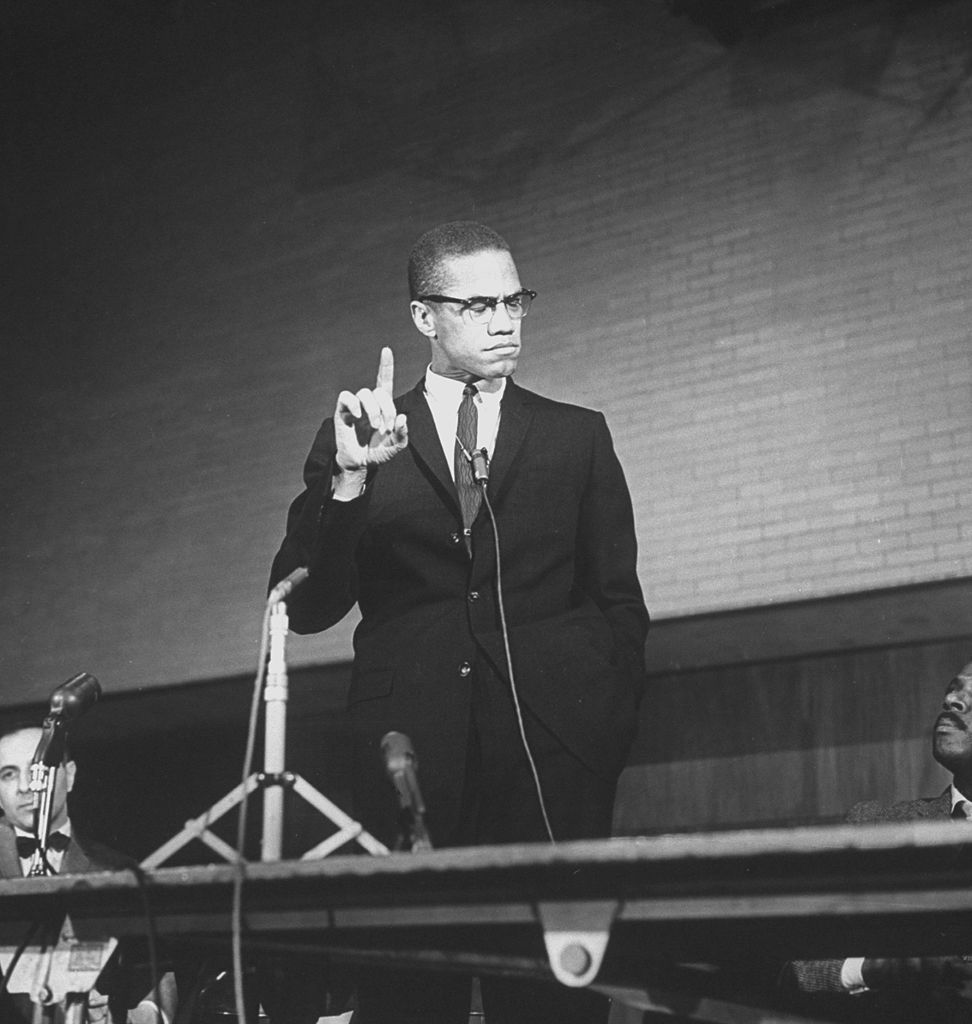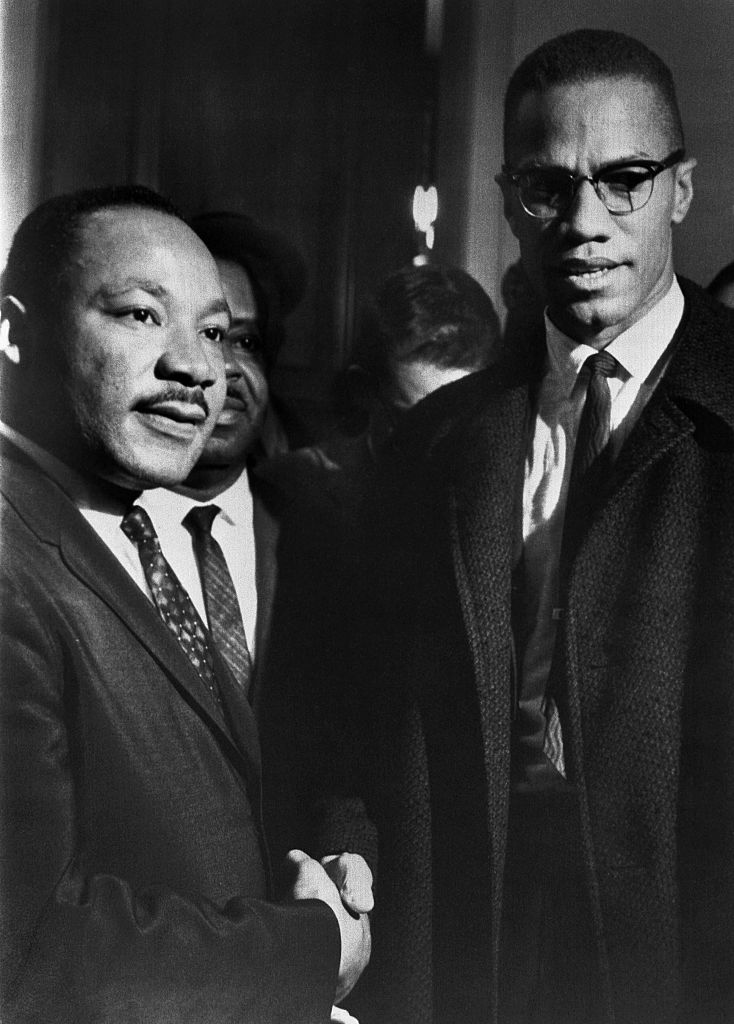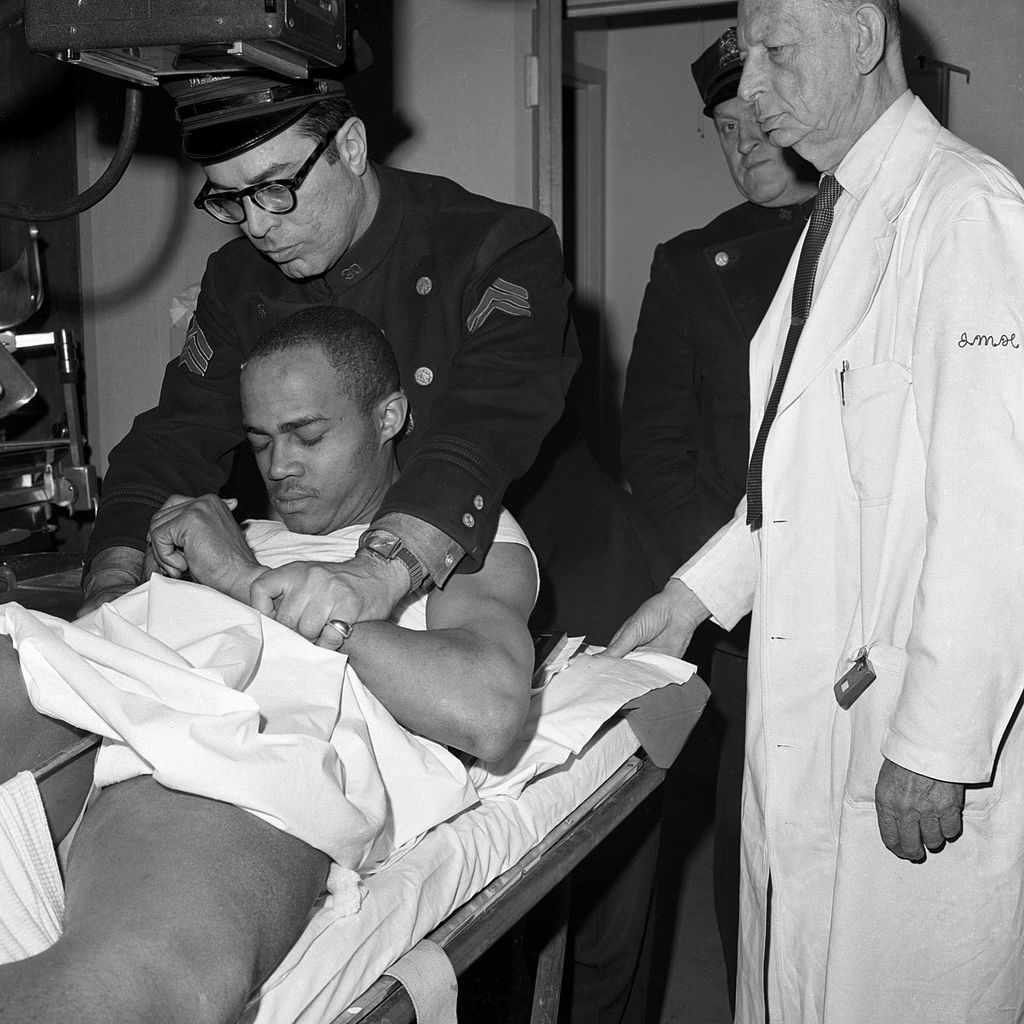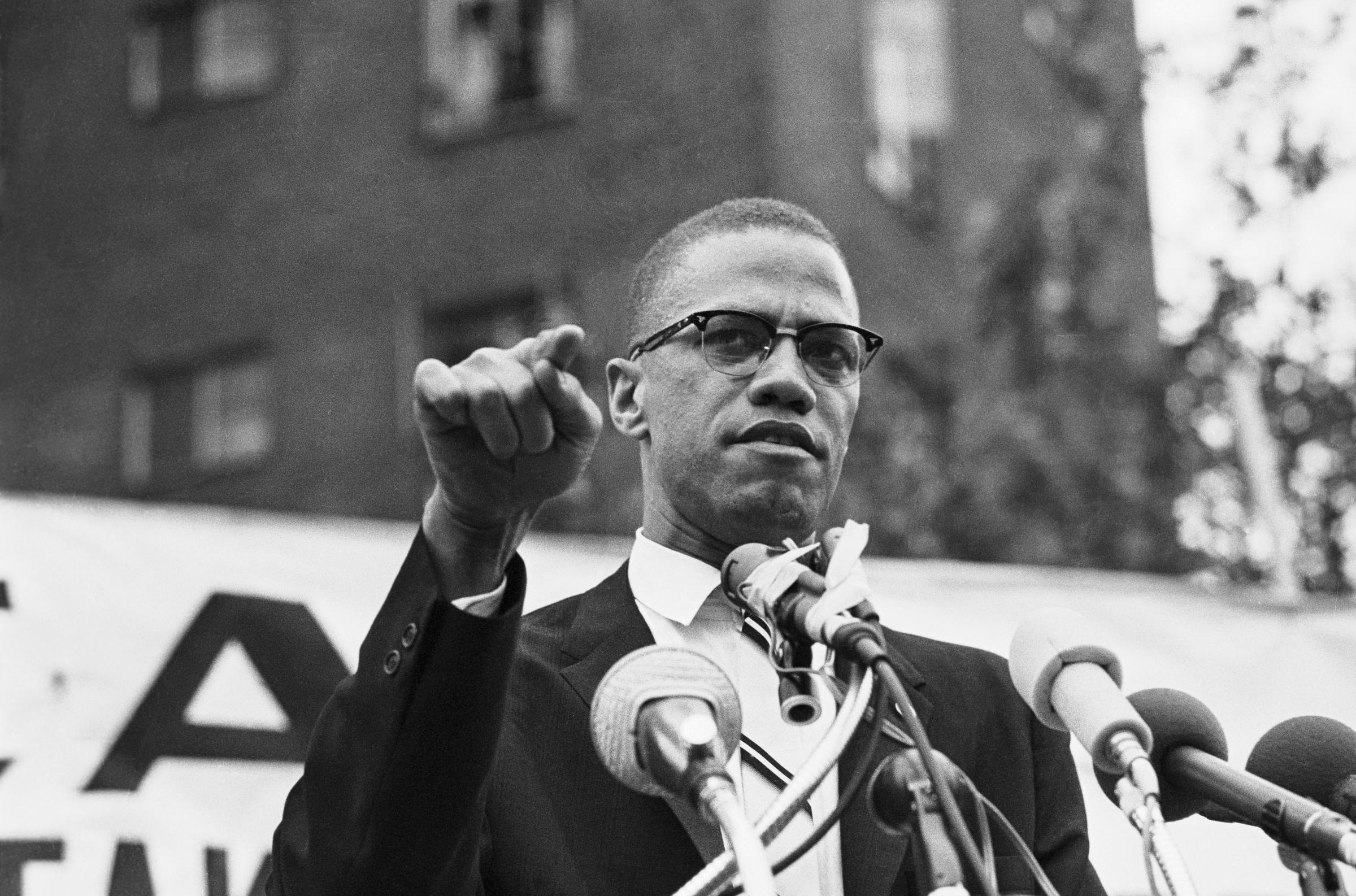
Friday marks 55 years since Malcolm X, one of the 20th century’s most important black figures, was assassinated at age 39 while speaking at the Audubon Ballroom in Harlem, New York, on Feb. 21, 1965. In the more than half a century since, what happened that day has remained the subject of debate.
Three members of the Nation of Islam (NOI) — Talmadge Hayer or Thomas Hagan (a.k.a Mujahid Abdul Halim), Norman Butler (a.k.a Muhammad Abdul Aziz) and Thomas Johnson (a.k.a Khalil Islam) — were convicted of his murder in 1966. The NOI is an African American religious and political organization formed in 1930 with the goal of improving the economic and spiritual conditions of the African American community in the United States. Malcolm X joined the group in 1952.

Law enforcement at the time framed Malcolm’s assassination as the result of an ongoing dispute between him and the NOI; Malcolm had left the group in 1964 on bad terms. In the years since, popular narratives have largely followed suit. (The NOI declined to comment on the record for this piece.) But Butler (Aziz) and Johnson (Islam) have consistently professed their innocence, and scholars who have studied the case have raised doubts about the killing’s circumstances.
More from TIME
On Feb. 7, following the recent premiere of a Netflix documentary series that reexamines the case, Manhattan District Attorney Cy Vance announced that his office will review the case.
Who was Malcolm X?
Malcolm X was born in Omaha, but moved around the country during his early years. His father died when Malcolm was 6 years old and, while the death was ruled to be a streetcar accident, it’s believed by historians that he was killed by members of the Ku Klux Klan.

As an adult, Malcolm became a minister and activist for the African American community, known for his strong beliefs in black self-determination and empowerment. By the late 1950s, he was among the most influential figures associated with the civil rights movement.
While in prison in the late 1940s for charges of larceny and breaking and entering, Malcolm converted to Islam and, when he was released in 1952, joined the NOI. He became one of the group’s most important speakers and leaders.
Malcolm’s positions on black freedom were seen as controversial in mainstream America, as he focused on black people creating their own power, structure and wealth, and dismissed the then-dominant ideas of integration and racial acceptance. He also believed strongly in the idea of self-defense as an alternative to nonviolent resistance.
“He did not preach violence, he preached self-defense,” says historian Zaheer Ali, the lead researcher for Manning Marable’s 2011 biography Malcolm X: A Life of Reinvention. “America has never been nonviolent with black people so instead of accusing Malcolm of being violent, we need to ask America about its violence.”
Ali says that Malcolm stood out from other black leaders at the time in large part because of his complicated background.
“This was someone who had come out of prison [and] emerged as a major leader of a growing organization at a time when most civil rights organizations did not even have a prison program, much less [would] hire a convict to be their spokesperson,” Ali tells TIME. “Malcolm represents this belief and hope in black potential, wherever that potential may be.”
Ali also says that Malcolm saw the plight of black people in a much larger frame. “He always imagined black freedom transcending the boundaries of the United States,” Ali explains. “He always saw himself as a citizen of the world, and connected to black people around the world.”
What were the circumstances leading up to his assassination?
In 1964, Malcolm X left the NOI. Several incidents had led him to question his relationship with the organization.
Malcolm had become uncomfortable with NOI leader Elijah Muhammad’s extramarital affairs, according to Malcolm X: A Life of Reinvention, and strongly disagreed with the NOI’s decision not to respond to acts of violence against Muslims at the hands of the Los Angeles police department.
In what has widely been interpreted as the last straw with regards to his relationship with the NOI, Malcolm was also “silenced” by the organization’s leadership after he spoke out regarding the assassination of President John F. Kennedy in November 1963. Muhammad had laid down a rule that the NOI not comment on Kennedy’s death; flouting this, Malcolm described the president’s assassination as “the chickens coming home to roost.”
The fallout from his leaving the NOI was serious. Many members viewed him as a traitor of the organization, and he received multiple death threats from within the group.
Malcolm went on to start two new organizations, Muslim Mosque, Inc (MMI) and the Organization of Afro-American Unity (OAAU).
As was the case for many civil rights organizations and activists, Malcolm was under near-constant surveillance by the federal and New York state governments. The FBI first opened a file on Malcolm in March 1953, and closely monitored him over the next decade using surveillance and informants in the NOI, OAAU and MMI.
On June 6, 1964, FBI Director J. Edgar Hoover sent a telegram, which later became public, to the FBI office in New York City that said “do something about Malcolm X.”
The New York Police Department (NYPD) had, at the time, a special unit called the Bureau of Special Services (BOSS) that had infiltrated many New York political organizations, including Malcolm’s. Malcolm X: A Life of Reinvention describes the NOI, MMI and OAAU as “virtual rats nests of conflicting loyalties” due to the number of informants positioned among their members’ ranks.
Law enforcement agencies “saw him as a threat,” Ali says. “They worked to undermine his efforts, to create and exacerbate conflict and really hastened the circumstances that would lead to his death.”

Just a week before his assassination, Malcolm X’s home in the New York City borough of Queens was firebombed while he, his wife Betty Shabazz and their four children were asleep inside. No one was ever charged related to the incident. Though no one was injured, it became obvious to Malcolm and those around him that he was in serious danger.
Get your history fix in one place: sign up for the weekly TIME History newsletter
What happened on the day of the assassination?
Prior to speaking at the Audubon Ballroom on Feb. 21, 1965, Malcolm had asked his security personnel not to perform security checks at the entrance. These searches of attendees were a longstanding practice enacted by the NOI at their rallies and one that Malcolm had initially continued after he left the organization. By January 1965, however, he had put a stop to them, though he retained a personal security detail. “[Malcolm] wanted to break away from the image” the searches represented, Peter Bailey, a former member of OAAU and associate of Malcolm’s is quoted saying in Malcolm X: A Life of Reinvention.
There were about 400 people in attendance for Malcolm’s speech, but no prevalent law enforcement presence was visible inside the Audubon Ballroom. This was unusual since police were typically highly visible at his rallies.
When Malcolm took the stage to begin his address, an apparent dispute broke out among the audience. As Malcolm and his security team tried to calm the commotion, an individual ran onto the stage, approached Malcolm and shot him. Two other people then ran up to the stage and fired as well. Malcolm was shot a total of 21 times.
What happened with the investigation into Malcolm X’s assassination?
Talmadge Hayer was shot in the leg by a bodyguard and apprehended by members of the crowd as he tried to escape before police arrived. The other two suspects, Butler and Johnson, were arrested a week later after witnesses allegedly identified them as being the other gunmen. Butler and Johnson were prominent members of the Harlem NOI.
The NYPD’s narrative “was that the Nation of Islam killed Malcolm,” Ali says. “They thought this was just some small-time crime between two rivals.”
However, during the ensuing trial, both Johnson and Butler maintained their innocence. Hayer admitted to being a part of the plan to assassinate Malcolm, but testified that Johnson and Butler were not involved, according to a New York Times article from March 1, 1966. At the time of the trial, Hayer did not name any other culprits.
There was no evidence linking Butler or Johnson to the crime. Butler even had an alibi for the time of the murder: He was at home resting after injuring his leg; a doctor who had treated him took the stand during the trial. Nonetheless, all three men were found guilty in 1966 and sentenced to life in prison.
Liz Mazucci, the former Chief Researcher on the Malcolm X Project, which is part of the Columbia University Center for Contemporary Black History, says law enforcement did not investigate the case thoroughly. The scene of the crime was processed so quickly, for example, that a dance party happened at the Audubon Ballroom just hours after the shooting.
“It seemed convenient to pin the murder charge on [Butler and Johnson],” Mazucci tells TIME, “even though they didn’t quite fit the story shared with [police] through eyewitness reports and FBI informants.”

In 1977 and 1978, Hayer submitted two affidavits in which he continued to assert that Butler and Johnson were not involved in the assassination. Hayer did, however, name four men — all members of the NOI’s Newark chapter who he alleged had begun planning Malcolm X’s murder in May 1964. He said that he was approached by two of the four men who told him that Malcolm X should be killed. They later met with the other two men and discussed how they would commit the crime.
“I had a bit of love and admiration for the Honorable Elijah Muhammed,” Hayer later said according to Malcolm X: A Life of Reinvention, “and I just felt that like this is something that I have to stand up for.”
Five days after the assassination, Muhammad denied any involvement with the assassination, but said that “Malcolm X got just what he preached.”
Law enforcement never pursued investigations into these men and the case was never reopened.
Butler was paroled in 1985. Johnson was released in 1989 and died in 2009. Hayer was released in 2010.
Why do some scholars want to reopen the case?
Scholars and historians have raised questions about Malcolm’s death for years. Some have alleged, furthermore, that law enforcement was well aware that Malcolm’s life was in danger but that, because the government had such an interest in undermining his work, they did not intervene to help him. Others have suggested that the government’s refusal to investigate the other suspects named by Hayer is evidence of a “more sinister” role, as Ali puts it, in the assassination.
“The Nation of Islam was no friend of the U.S. government, and the U.S. government was no friend of the Nation of Islam,” Ali says. “So the question has to be put on the table: why would the U.S. government not pursue all viable leads into who was actually responsible for Malcolm’s assassination?'”
Garrett Felber, an African American history professor at the University of Mississippi, agrees that the government’s potential role in the assassination is worth investigating. “The narrative that [the assassination] was an internal gang feud traffics is this racist black-on-black violence trope that gets played out over and over, and the state gets to be off the hook,” he says.
The NYPD’s BOSS investigation file on Malcolm X officially ends in 1964. Felber argues, however, that it’s inconceivable that they stopped following that year, as Malcolm was still a very active figure. Mazucci adds that the NYPD must release all their records in order for the case to be properly reviewed.
The FBI has released some files on the case, many of which are included in the 1995 Clayborne Carson book Malcolm X: The FBI File. A lot of the details, however, remain redacted. For example:
[BUREAU DELETION] did not know who shot MALCOLM nor did he see any firearms. [BUREAU DELETION] appeared to him there was a definite lack of security at this rally. In addition [BUREAU DELETION] there did not appear to be enough guards in the front of the hall nor any guards near the exits
Many have advocated for Malcolm’s case to be reviewed under the FBI’s 2006 Cold Case Initiative, and the ensuing 2008 Emmett Till Unsolved Civil Rights Crime Act, which allowed for violent crimes suspected to have been a result of racial animus to be reopened and investigated. Malcolm’s case was not considered, however, because it wasn’t viewed as a crime of racial injustice. Ali says that is a mistake. “We should always hold the assassination of Malcolm X in our minds of examples of state complicity, duplicity or active acts against the black community,” he says.

In February, however, Manhattan District Attorney Cy Vance announced that his office will review the case, working with the Innocence Project, a nonprofit that works to exonerate innocent people. “[Vance] has determined that the district attorney’s office will begin a preliminary review of the matter,” the DA’s office said in a statement sent to TIME, “which will inform the office regarding what further investigative steps may be undertaken.”
This decision came after the release of the Netflix documentary Who Killed Malcolm X, which premiered on Feb. 7. Butler — who is now being represented by the Innocence Project — is featured in the documentary.
“Given the historical importance of this case and the fact that our client is 81 years old, we are especially encouraged that Mr. Vance has assigned two highly respected prosecutors, Peter Casolaro and Charles King, to work on this re-investigation,” Barry Scheck, Innocence Project co-founder and special counsel said in a statement.
What is Malcolm X’s legacy?
“Malcolm X’s legacy is all of the social justice movements that sprung up in the wake of his death. It’s the Black Panther Party. It’s Black Lives Matter,” Mazucci tells TIME. “Malcolm was an organic intellectual who loved black people profoundly; he sacrificed his life helping them find ways to uplift and defend themselves.”
“He was always a man of faith,” Ali adds. “He had a deep belief in a power greater than himself that motivated him and allowed his imagination to dream for freedom of black people that was not readily apparent at the time.”
More Must-Reads From TIME
- The 100 Most Influential People of 2024
- Coco Gauff Is Playing for Herself Now
- Scenes From Pro-Palestinian Encampments Across U.S. Universities
- 6 Compliments That Land Every Time
- If You're Dating Right Now , You're Brave: Column
- The AI That Could Heal a Divided Internet
- Fallout Is a Brilliant Model for the Future of Video Game Adaptations
- Want Weekly Recs on What to Watch, Read, and More? Sign Up for Worth Your Time
Write to Josiah Bates at josiah.bates@time.com